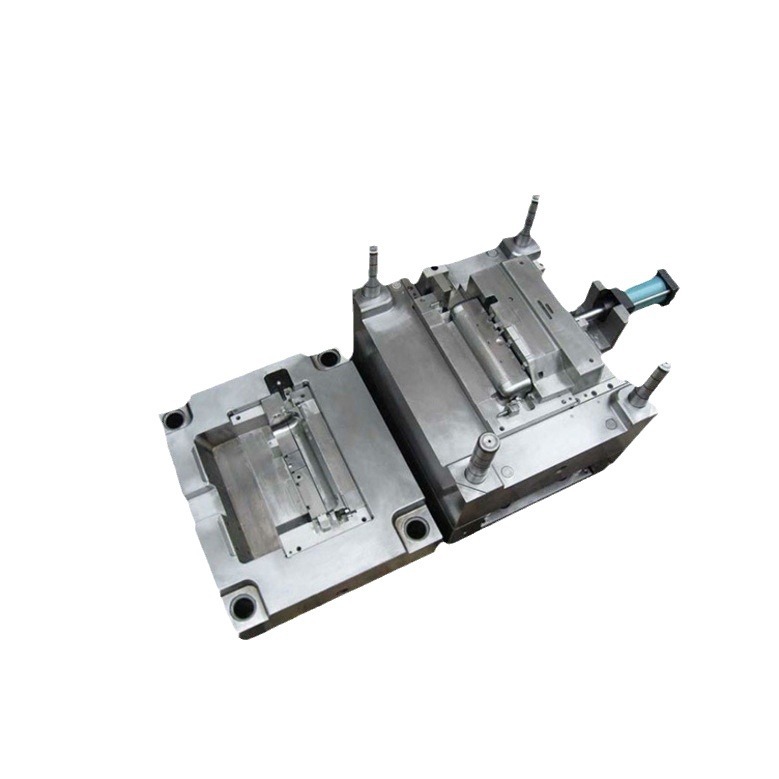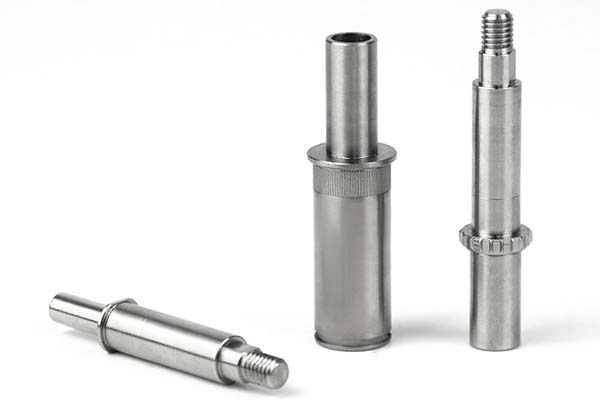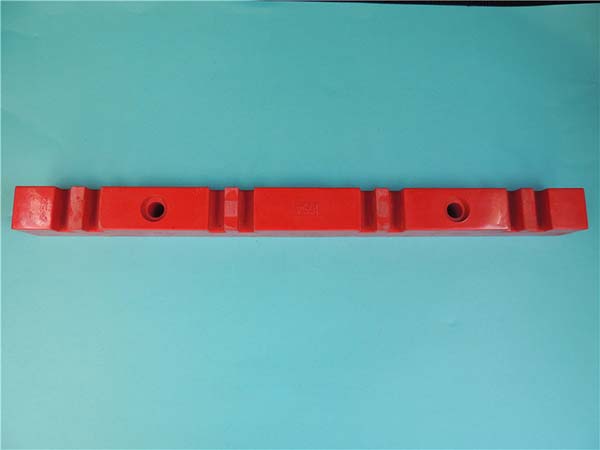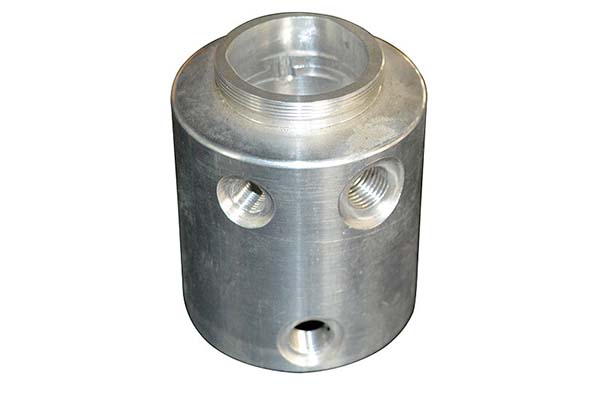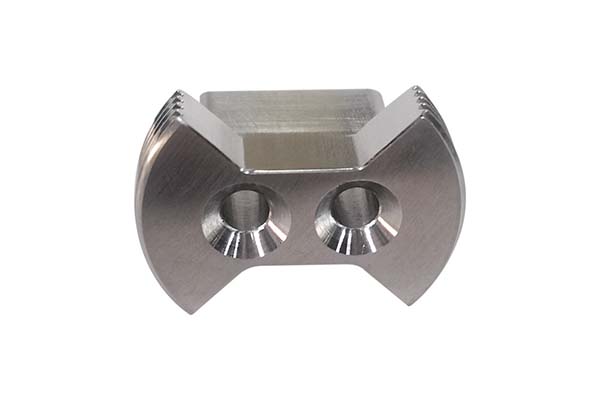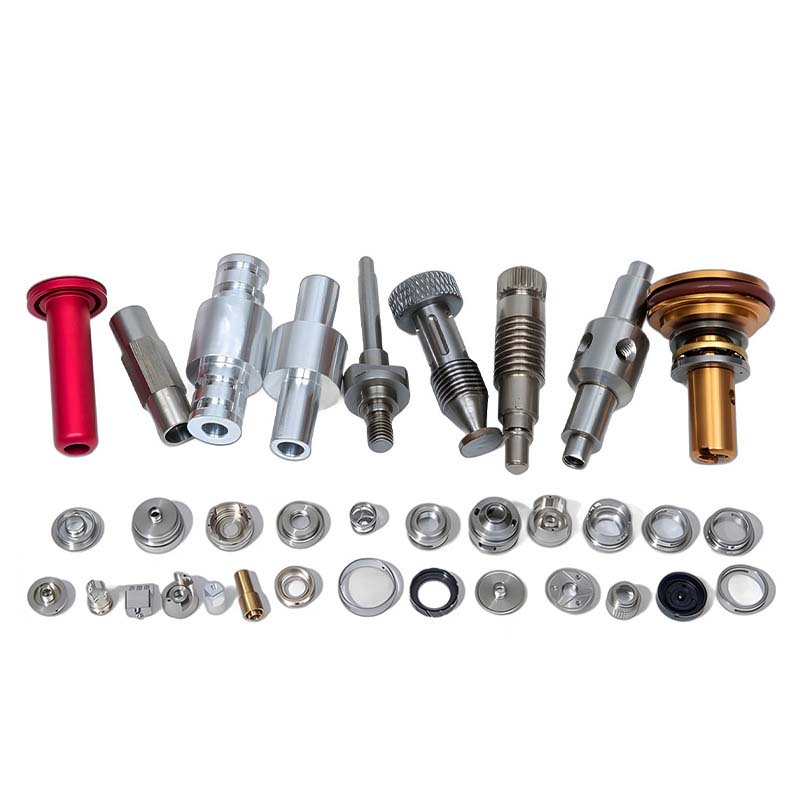CNC machining of Nylon PA12 presents a unique set of challenges, even for experienced manufacturers. Its lower moisture absorption compared to other nylons affects dimensional stability during machining, while its superior low-temperature performance means it behaves differently under cold conditions—factors that can lead to unexpected tool wear or surface defects. Additionally, its relatively low melting point requires careful heat management to avoid deformation. This guide addresses these pain points, offering expert strategies to master Nylon PA12 machining.
Material Characteristics of Nylon PA12
Nylon PA12, or Polyamide 12, stands out among nylons for its balanced properties, particularly in harsh environments. Its mechanical properties include a tensile strength of 45-60 MPa and a flexural strength of 65-80 MPa, making it suitable for medium-load applications. What truly sets it apart is its low-temperature performance—it maintains impact resistance of 40-60 kJ/m² even at -40°C, far exceeding PA6 and PA66, which become brittle in cold conditions.
In terms of thermal properties, Nylon PA12 has a melting point of 170-180°C, lower than PA6 and PA66, which means it requires more careful heat management during machining. Its thermal expansion coefficient is 100-110 μm/m·K, slightly higher than PA66 but manageable with proper toolpaths.
Moisture absorption in Nylon PA12 is just 0.5-1.5%, significantly lower than PA6 (2-3%) and PA66 (1.5-2.5%). This reduces post-machining dimensional changes to less than 0.5%, a major advantage for precision parts. Its density is 1.01-1.04 g/cm³, the lowest among common nylons, making it ideal for weight-sensitive applications.
Abrasion resistance is good, though slightly lower than PA66, and its chemical resistance includes tolerance to oils, fuels, and many solvents—better than PA6 in resisting hydrocarbons. Its electrical properties make it a reliable insulator, with a volume resistivity of 10¹⁴-10¹⁵ Ω·cm, similar to other nylons. Dimensional stability is excellent due to low moisture absorption, even in humid environments.
| Property | Nylon PA12 | Nylon PA66 | Nylon PA6 |
| Tensile Strength | 45-60 MPa | 60-80 MPa | 45-60 MPa |
| Moisture Absorption | 0.5-1.5% | 1.5-2.5% | 2-3% |
| Melting Point | 170-180°C | 255-265°C | 215-220°C |
| Impact Resistance (-40°C) | 40-60 kJ/m² | 10-15 kJ/m² | 5-10 kJ/m² |
CNC Machining Processes for Nylon PA12
CNC machining of Nylon PA12 requires adjustments to account for its low moisture absorption and lower melting point:
- Milling: Used for creating complex shapes, with CNC mill spindles operating at moderate torque (10-15 kW) due to PA12’s lower rigidity compared to PA66. A 3-axis mill suffices for most parts, while 5-axis mills handle intricate geometries.
- Turning: Performed on a CNC lathe with a focus on reducing heat—slower spindle speeds than PA66 prevent softening, given PA12’s lower melting point.
- Drilling: Benefits from sharp, polished flutes to handle PA12’s tendency to produce fine, powdery chips, which can clog tools if not evacuated properly.
- Cutting: Shearing with CNC routers works well, though feed rates must be balanced to avoid melting—faster than PA66 but slower than acrylics.
Machining centers with variable-speed spindles (500-6000 RPM) are ideal for PA12, allowing precise control over heat generation. CNC programming with CAM software (e.g., SolidWorks CAM, Esprit) should prioritize machining sequence—roughing first to remove bulk material, then finishing passes to maintain dimensional accuracy. Proper part setup with fixtures that apply even clamping pressure prevents deformation, as PA12 is more flexible than PA66. Workholding solutions like soft-jaw chucks avoid marring its surface.
Tool Selection and Optimization
Choosing the right tools is critical for efficient Nylon PA12 machining:
- Carbide tools with grade K10 or K30 carbide are preferred for their wear resistance, though PA12’s lower abrasiveness means tool life is 20-30% longer than with PA66. This makes high-speed steel (HSS) tools a viable option for low-volume production, with sharpening needed every 100-150 parts.
- End mills with 2-4 flutes: 2-flute designs for better chip evacuation (critical for PA12’s fine chips), 4-flute for smoother surface finishes. A helix angle of 30-35° balances cutting efficiency and chip flow.
- Drills with a 118° point angle and parabolic flutes improve chip removal, reducing clogging and heat buildup.
- Reamers with carbide tips ensure tight tolerances (±0.005 mm), though HSS reamers work for less critical applications.
Tool geometry with a sharp cutting edge (radius <0.03 mm) minimizes fuzzing, a minor issue with PA12 compared to PA6. Tool coatings like TiN (titanium nitride) reduce friction and heat, extending tool life by 15-20% compared to uncoated tools. Tool deflection is more common than with PA66 due to PA12’s flexibility, so using short, rigid tools (length-to-diameter ratio <5:1) is recommended.
Machining Parameters and Techniques
Optimizing machining parameters is key to avoiding heat-induced defects in Nylon PA12:
- Cutting speed: 120-180 m/min for milling, 100-150 m/min for turning—lower than PA66 due to PA12’s lower melting point.
- Feed rate: 0.1-0.15 mm/tooth for milling, 0.08-0.12 mm/rev for turning. Higher feeds can cause fuzzing, while lower feeds increase heat exposure.
- Depth of cut: 1-3 mm for roughing, 0.1-0.3 mm for finishing—shallower than PA66 to reduce tool deflection.
- Spindle speed: 2000-4000 RPM for milling, 1000-2500 RPM for turning, adjusted based on tool diameter.
Toolpath strategies like climb milling reduce tool wear by 15% compared to conventional milling, as it minimizes rubbing against PA12’s flexible surface. Maintaining a chip load of 0.01-0.02 mm/tooth ensures efficient chip evacuation, preventing heat buildup from trapped chips. Coolant use with a water-soluble coolant (5-8% concentration) helps dissipate heat, though dry machining is possible for small parts with proper speed/feed adjustments. Lubrication with light mineral oil improves surface finish on turning operations.
Heat generation is a concern due to PA12’s low melting point; monitoring cutting temperatures (keeping them below 150°C) prevents softening. Pausing between passes for cooling is useful for large parts.
Surface Finish and Post-Machining Treatments
Nylon PA12’s surface finish typically ranges from Ra 0.6-1.2 μm with standard parameters, better than PA6 but slightly rougher than PA66. Achieving Ra 0.4-0.6 μm requires:
- Sharp tools with polished flutes to reduce friction-induced fuzzing.
- Reduced feed rates (0.08-0.1 mm/tooth) during finishing passes.
- Toolpath optimization with smooth transitions between cuts to avoid surface marks.
Post-machining treatments for Nylon PA12 include:
- Deburring with abrasive pads or ultrasonic cleaning removes sharp edges, critical for safety in consumer products and medical devices.
- Polishing with 600-1000 grit sandpaper achieves a smooth finish (Ra <0.3 μm) for aesthetic parts.
- Annealing at 80-100°C for 2-3 hours relieves internal stresses, reducing post-machining warping—less critical than with PA6 due to PA12’s low moisture absorption.
- Painting or coating requires minimal surface preparation, though light abrasion improves adhesion to PA12’s low-energy surface.
Dimensional accuracy of ±0.008 mm is achievable with proper setup, and post-machining moisture changes are minimal, so inspection can be done immediately after machining using micrometers or CMMs.
Surface Finish and Post-Machining Treatments
Nylon PA12’s surface finish typically ranges from Ra 0.6-1.2 μm with standard parameters, better than PA6 but slightly rougher than PA66. Achieving Ra 0.4-0.6 μm requires:
- Sharp tools with polished flutes to reduce friction-induced fuzzing.
- Reduced feed rates (0.08-0.1 mm/tooth) during finishing passes.
- Toolpath optimization with smooth transitions between cuts to avoid surface marks.
Post-machining treatments for Nylon PA12 include:
- Deburring with abrasive pads or ultrasonic cleaning removes sharp edges, critical for safety in consumer products and medical devices.
- Polishing with 600-1000 grit sandpaper achieves a smooth finish (Ra <0.3 μm) for aesthetic parts.
- Annealing at 80-100°C for 2-3 hours relieves internal stresses, reducing post-machining warping—less critical than with PA6 due to PA12’s low moisture absorption.
- Painting or coating requires minimal surface preparation, though light abrasion improves adhesion to PA12’s low-energy surface.
Dimensional accuracy of ±0.008 mm is achievable with proper setup, and post-machining moisture changes are minimal, so inspection can be done immediately after machining using micrometers or CMMs.
Applications of CNC Machined Nylon PA12 Parts
CNC machined Nylon PA12 parts excel in applications requiring low-temperature performance and chemical resistance:
- Automotive parts: Fuel lines, brake components, and underhood parts leverage its resistance to fuels and low-temperature flexibility.
- Aerospace components: Cabin interior parts and hydraulic system components withstand cold temperatures at high altitudes.
- Marine applications: Valve handles, pump parts, and cable housings resist saltwater corrosion better than many metals.
- Medical devices: Cold-sterilized tools and diagnostic equipment components use PA12 for its chemical resistance and low moisture absorption.
- Sports equipment: Ski bindings, snowmobile parts, and outdoor gear benefit from its low-temperature impact resistance.
- Electrical insulators: Cold-weather electrical components, such as those used in refrigeration systems, rely on its insulation properties.
- Industrial parts: Conveyor components and gaskets in cold-storage facilities perform reliably in sub-zero temperatures.
Yigu Technology's Perspective
Yigu Technology specializes in CNC machining Nylon PA12, with expertise in managing its unique properties like low moisture absorption and low-temperature flexibility. We use a combination of carbide and HSS tools based on production volume, optimizing toolpaths to minimize heat generation. Our CAM-optimized strategies prioritize chip evacuation, crucial for PA12’s fine chips, and we adjust parameters to account for its lower melting point. Whether producing aerospace components or cold-weather industrial parts, we tailor our approach to maximize PA12’s strengths, delivering precise, reliable parts that perform in the harshest environments.
FAQ
- How does Nylon PA12 compare to Nylon PA66 in machining?
Nylon PA12 is easier to machine due to lower abrasiveness, allowing longer tool life, but requires lower cutting speeds to avoid melting. Its lower moisture absorption reduces post-machining dimensional changes, though it is more flexible, requiring careful fixturing.
- Why is Nylon PA12 preferred for low-temperature applications?
Nylon PA12 retains impact resistance at -40°C, unlike PA66, which becomes brittle. This makes it ideal for cold environments like aerospace, marine, and refrigeration systems.
- What causes fuzzing in Nylon PA12 machining, and how to prevent it?
Fuzzing is caused by dull tools or excessive feed rates that tear the material. Using sharp tools with polished flutes, reducing feed rates, and ensuring proper chip evacuation prevents this issue.

